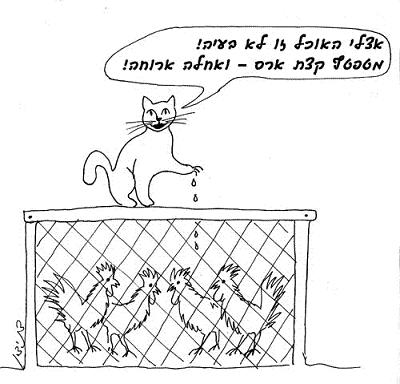
According to the early sages there are predators which have venom in their claws and thus can kill their prey. For example, a lion has venom which can kill a large cow, and a wolf has venom which can kill a goat or a buck (small animals which do not require large amounts of venom to kill). The wolf does not have enough venom in its claws to kill a large cow.
One of the sages, Rav Chisda, ruled that a cat or a mongoose can kill small kids and lambs, but the mole’s venom is sufficient to kill only birds. The scholars asked: Didn’t the early sages (Tanaaim) ruled that a cat, a hawk, and a mongoose do not have sufficient venom to kill kids and lambs, meaning that the cat can’t kill lambs and kids, only birds? Answer: According to the sage Rav Chisda, the cat’s venom will not kill a kid or lamb specifically when there are no people around to help the prey. In this case the cat does not become angry enough to excrete venom capable of killing. If the kid or lamb has someone around to help, the cat becomes very angry and excretes a venom which is powerful enough to kill even a kid or lamb. The scholars then related an incident in which a cat chased a chicken — and there was no one around to help the chicken. The chicken eluded the cat and ran into a room. The door closed behind him and the cat scratched the door, leaving five bloody drops of venom, meaning that the cat excreted venom though the chicken had no one to help him. Answer: When the kid or the chicken manages to escape and save itself it is as though a person helped it. The cat gets angry and pours out venom upon the door which closed in his face.
(Babylonian Talmud, Tractate Chulin 52b-53a)
